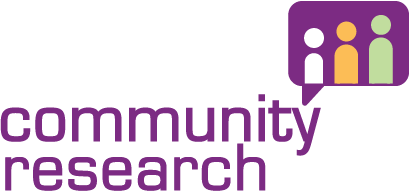The Power of Story Telling
Data with real impact
Sharing a story can have immense power, both for the story-teller (they know their story is being listened to and shared to make a difference) and for the audience. We know that stories from individuals – in their own words and (where possible) their own voices – prompt empathy and connection in a way that most other data, derived from research, simply cannot. Stories are memorable, help raise the profile and understanding of issues and inspire people to make a change. Giving participants the opportunity to talk about their experiences in their own words in an unstructured way provides our clients with authentic first person voice testimony.
This storytelling approach is in the tradition of narrative inquiry which uses field texts, such as stories, autobiography, journals, field notes, letters, conversations, interviews, family stories, photos (and other artifacts), and life experience, as the units of analysis to research and understand the way people create meaning in their lives as narratives. According to the Social Research Association ‘knowledge and insight is created and constructed through the stories of lived experience and sense-making, the meanings people afford to them, and therefore offers valuable insight into the complexity of human lives, cultures, and behaviours.’*
A key feature of the approach is that analysis doesn’t wait until after the fieldwork but, instead, happens throughout the research process . The focus is on co-construction of meaning between the researcher and participants. The researcher assimilates what they are being told and asks further questions to start to build a picture of what it means.
Illustrating the story
Stories have an incredible impact as a communications tool. Stories are memorable, and inspire people to make a change. When you think back to the stories you were told as a child, it is likely that the pictures are what come to mind first. We are acutely aware, then, of the need to ensure that our research has visual impact. We seek to tell the stories of research participants, as visually as possible, using photographs, illustrations and film wherever we can. For some projects (with very vulnerable participants or those who would be reluctant to share their story in public) we have to be very mindful of the absolute necessity of anonymity. Sometimes it is not possible to use film but there are other options we have to bring experiences vibrantly to life, for example:
Written stories and poems along with collages and drawings can provide visual interest, help maintain anonymity, and convey emotions and feelings that other formats miss.
Hybrid, fictional and anonymised vignettes or case studies, carefully constructed to ensure that no identifiable or personal information is used, can make use of visual imagery without giving away individual identities.
Digitally altered audio clips of participants sharing their stories can have enormous impact, we can play these along with a static visual image that links to or is a metaphor for the spoken words.
You can read about one example of a story telling project approach here, and about how we brought people’s experiences of vulnerability to life through a storyboard style output here.
* Jean Clandinin and F. Michael Connelly, Narrative Inquiry: Experience and Story in Qualitative Research (San Francisco: Jossey-Bass Publishers, 2000), 98–115

